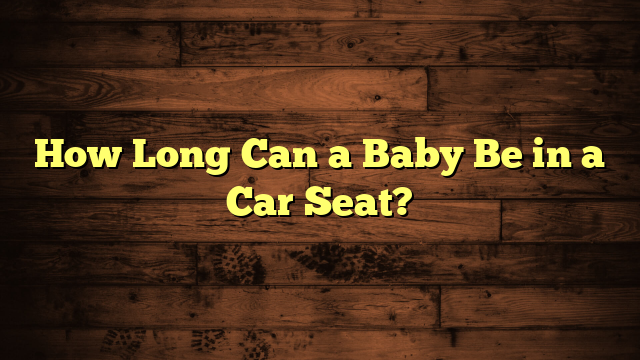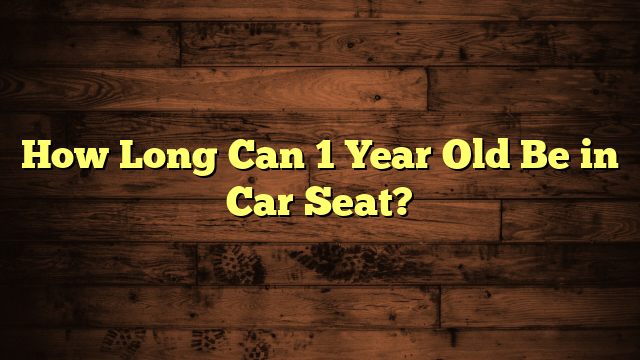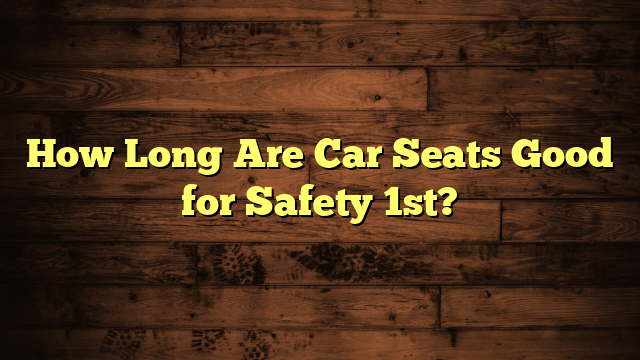When Can Child Use Booster Seat?
It's funny how you can run into a friend at the grocery store and suddenly find yourself discussing car safety for kids. When it comes to booster seats, understanding when your child is ready can be vital. You might think the guidelines are straightforward, but there's more to the story than just age and weight. What if your child doesn't fit the typical mold? Exploring the nuances of booster seat requirements can reveal essential details that guarantee your child's safety during every ride.
Key Takeaways
- Children should be at least 4 years old and weigh a minimum of 40 pounds to use a booster seat.
- The child must be between 40 inches and 4 feet 9 inches tall for proper booster seat fit.
- High-back boosters are for children aged 4 to 7 weighing 40 to 80 lbs; backless boosters suit ages 8 to 12 weighing 50 to 100 lbs.
- Ensure the seat belt lies flat across the upper thighs and chest, avoiding the neck or face when seated.
- A child can transition to an adult seat belt if they are over 8 years old and properly fit the seat without a booster.
Importance of Booster Seats
The safety of your child is paramount, and using a booster seat plays an essential role in that. Booster seats offer considerable benefits when it comes to child safety in vehicles. They elevate your child to a height where the seat belt fits correctly over their shoulder and lap, reducing the risk of injury in the event of an accident.
Without a booster seat, the seat belt may rest too high on your child's neck or too low on their stomach, which can lead to dangerous outcomes.
Moreover, booster seats are designed to accommodate a child's growth, providing comfort while ensuring ideal protection. They come in various styles, including high-back and backless options, allowing you to choose what works best for your situation.
By investing in a booster seat, you're not just complying with safety regulations; you're actively prioritizing your child's security during every car ride.
Ultimately, understanding the importance of booster seats can make a critical difference in your child's safety on the road.
Age and Weight Guidelines
Choosing the right time to switch your child to a booster seat depends on their age and weight, as these factors are critical for guaranteeing proper fit and safety. Familiarizing yourself with booster seat regulations and child safety laws in your area will help you make informed decisions.
Here's a quick reference table to guide you:
| Age Group | Weight Range | Booster Seat Type |
|---|---|---|
| 4 to 7 years | 40 to 80 lbs | High-back booster seat |
| 8 to 12 years | 50 to 100 lbs | Backless booster seat |
| 4 to 12 years | 40 to 100 lbs | Combination booster seat |
| 8 years and up | Over 80 lbs | Adult seat belt (if fit) |
| Under 4 years | Under 40 lbs | Forward-facing car seat |
Make sure to check local laws, as they may specify different requirements. Remember, keeping your child safe is the top priority, so adhere to these guidelines to guarantee they're secure and comfortable while traveling.
Height Requirements
Height requirements play an essential role in determining when your child can safely shift to a booster seat. Adhering to booster seat regulations is vital for guaranteeing your child meets necessary child safety standards.
Generally, children should move to a booster seat when they reach a height of around 4 feet 9 inches, but specific guidelines may vary by state. It's important to check local laws for the most accurate information.
Here are some key height-related points to take into account:
- Minimum Height: Most states require children to be at least 4 years old and typically around 40 inches tall before using a booster seat.
- Maximum Height: If your child exceeds 4 feet 9 inches, they may be ready for a regular seat belt.
- Proper Fit: Confirm that the shoulder belt rests on the shoulder, not the neck, and the lap belt sits low across the hips.
- Comfort Level: Your child should comfortably sit against the back of the vehicle seat with their knees bent over the edge.
Following these guidelines will help you make informed decisions about your child's safety on the road.
Types of Booster Seats
When it comes to booster seats, you've got several options to choose from.
High-back booster seats provide extra support and head protection, while backless booster seats are more portable and easier to store.
Combination booster seats offer versatility, shifting from a harnessed car seat to a booster seat as your child grows.
High-back Booster Seats
High-back booster seats offer an essential solution for safely transporting children who've outgrown their forward-facing car seats but aren't quite ready for adult seat belts.
These seats provide several high back benefits that enhance safety and comfort during car rides. Here's what you should know about them:
- Better Head and Neck Support: The high back design cushions your child's head and neck, reducing the risk of injury in a crash.
- Proper Seat Belt Positioning: These seats help position the seat belt correctly across your child's shoulder and lap, ensuring maximum effectiveness.
- Side Impact Protection: Many high-back boosters come with side wings that provide added protection in the event of a side collision.
- Easy Installation: With straightforward installation tips, you can secure the booster seat quickly and effectively, ensuring your child's safety.
When you choose a high-back booster seat, you're making a smart decision for your child's safety.
Always make sure to follow the manufacturer's instructions for installation to maximize these benefits.
Backless Booster Seats
Choosing a backless booster seat can be a practical option for parents who want to guarantee their child is safely secured in a vehicle without the bulk of a larger seat.
Backless booster seats elevate your child so that the vehicle's seat belt fits correctly, making certain both comfort and safety. One of the primary backless booster benefits is their lightweight and portable design, making them easy to transfer between cars and perfect for families on the go.
When it comes to backless booster safety, these seats are generally recommended for children who weigh at least 40 pounds and are tall enough to sit comfortably with their back against the seat.
It's essential to confirm that the vehicle's seat belt fits snugly across your child's shoulder and lap for maximum protection.
While backless boosters lack head and neck support, they can still be a secure option for older children who've outgrown traditional car seats.
Always check the manufacturer's guidelines and your local laws to make certain compliance.
Combination Booster Seats
Many parents find that combination booster seats are a versatile choice for their growing children. These seats can evolve from a forward-facing harness seat to a booster seat, making them a smart investment.
Here are some key combination booster seat features and benefits that you should consider:
- Safety: They provide enhanced protection with a 5-point harness for younger children.
- Longevity: These seats can be used for several years, accommodating children from 20 to 100 pounds or more.
- Ease of Use: Many models are easy to install and adjust, allowing for a hassle-free experience.
- Comfort: Combination booster seats often come with padded seats and adjustable headrests, ensuring your child stays comfortable on long rides.
Choosing a combination booster seat gives you peace of mind as your child grows. By investing in one of these seats, you're not just securing your child's safety; you're also providing a flexible solution that adapts to their needs.
Signs Your Child Is Ready
As your child grows, it's important to know when they're ready for a booster seat.
Look for age and weight guidelines, a proper seat belt fit, and height requirements to determine their readiness.
Understanding these signs guarantees your child is safe and secure while traveling in the car.
Age and Weight Guidelines
Shifting from a car seat to a booster seat is an important step in your child's safety during car rides. Understanding the age and weight guidelines is essential for making this change.
Each state has its own booster seat regulations, but generally, you should consider the following signs your child is ready:
- Age: Your child should be at least 4 years old.
- Weight: They typically need to weigh at least 40 pounds.
- Height: Verify they're tall enough for the booster seat to fit properly.
- Maturity: Your child should be ready to sit still during the entire ride.
These guidelines align with child safety laws that vary by state, so it's vital to check local regulations.
Before making the switch, assess if your child meets these criteria. A booster seat helps position the seat belt correctly across their body, enhancing their protection in the event of an accident.
Seat Belt Fit
Guaranteeing a proper seat belt fit is vital for your child's safety when moving to a booster seat. You'll want to check that the seat belt lies flat across your child's body, not on their neck or face. The lap belt should fit snugly across the upper thighs, not the stomach. This proper positioning guarantees that, in the event of a crash, the seat belt restrains your child effectively.
Look for signs that indicate your child is ready for the change. They should be able to sit with their back against the vehicle seat and their knees bent comfortably at the edge. If your child can't achieve this without slumping or leaning, they might still need a harnessed car seat.
Pay attention to the seat belt adjustment; your child should be able to buckle and unbuckle the seat belt without assistance. This independence is a good indication that they're ready for a booster seat.
Height Requirements
Height requirements play an essential role in determining when your child is ready to shift to a booster seat.
To guarantee your little one is safe and secure, you should follow specific measurement guidelines. Typically, your child should be at least 4 years old and weigh between 40 and 100 pounds. However, the most critical factor is their height.
Here are four signs that your child meets the booster seat height requirements:
- Height: Your child should be at least 4 feet 9 inches tall.
- Seat Belt Fit: When seated, the seat belt should lay across their upper thighs and chest, not their neck or face.
- Feet on the Floor: Your child's feet should rest flat on the vehicle floor, guaranteeing stability.
- Back Against the Seat: Their back should be against the vehicle seat without slouching.
Safety Tips for Booster Seat Use
Using a booster seat correctly is essential for your child's safety during car rides. First and foremost, always follow the booster seat regulations in your area. These rules are designed to guarantee your child is properly protected based on their age, weight, and height.
Make sure your booster seat is installed securely, ideally in the back seat, as this is the safest place for children.
Next, educate your child about the importance of using the booster seat. Child safety education is critical, so explain why they need to be buckled in. Encourage them to always wear the seatbelt, making certain it fits snugly across their lap and shoulder. The lap belt should rest low across the thighs, while the shoulder belt should lay across the middle of the chest.
Additionally, check the booster seat frequently for any signs of wear and tear. It's important to replace any damaged parts and verify the seat meets current safety standards.
Finally, don't rush the process; your child should remain in a booster seat until they meet the height and weight requirements to shift to a regular seatbelt. By following these tips, you can help keep your child safe on every journey.
Common Misconceptions
When it comes to booster seat usage, many parents hold misconceptions that can jeopardize their child's safety. These misunderstood regulations can lead to improper use of booster seats, which may increase the risk of injury in the event of an accident.
Here are some common parental misconceptions:
- Age Limits: Many believe booster seats are only for younger children, but weight and height are the vital factors.
- Transitioning Too Soon: Some parents think they can switch to a seatbelt as soon as their child reaches a certain age. In reality, proper fit is what matters most.
- One Size Fits All: Many think all booster seats are created equal, but different models fit various vehicles, and not every child will fit in every booster seat.
- Lack of Awareness: Some aren't aware that laws vary by state, making it essential to stay informed about local regulations.
Frequently Asked Questions
Can My Child Use a Booster Seat in Any Vehicle?
You need to check booster seat regulations, as they vary by state. Most booster seats fit in most vehicles, but verify your car's seat belt system is compatible for proper safety and effectiveness.
Is It Safe to Use a Second-Hand Booster Seat?
Using a second-hand booster seat can feel like maneuvering through a maze. You've got to check for safety standards and follow second-hand guidelines. If it's in good condition, it can be a safe option for your child.
How Do I Install a Booster Seat Properly?
To install a booster seat properly, choose the right booster seat types for your child. Follow these installation tips: secure the seat with the vehicle's seat belt, ensuring it's snug and the seat doesn't move.
Are Booster Seats Required on School Buses?
Imagine a bustling school bus, filled with laughter and chatter. While booster seat regulations vary, most states don't require them on school buses, emphasizing school bus safety through design, rather than individual seating restraints.
What Should I Do if My Child Resists Using a Booster Seat?
If your child's resisting the booster seat, use positive reinforcement and explain its importance for child safety. Consistent parenting strategies, like setting clear expectations and making it fun, can help them adapt more easily.
Conclusion
In summary, using a booster seat is essential for your child's safety in the vehicle. Remember, children should stay in booster seats until they meet age, weight, and height requirements. Notably, studies show that booster seats reduce the risk of injury by 45% compared to seat belts alone for children aged 4 to 8. By ensuring your child is properly secured, you're not just complying with guidelines; you're actively protecting their well-being on every trip.
- Can I Get in a Taxi Without a Car Seat? - January 26, 2025
- Can I Get Chlamydia From a Toilet Seat? - January 26, 2025
- Can I Get an Uber With a Car Seat? - January 26, 2025






